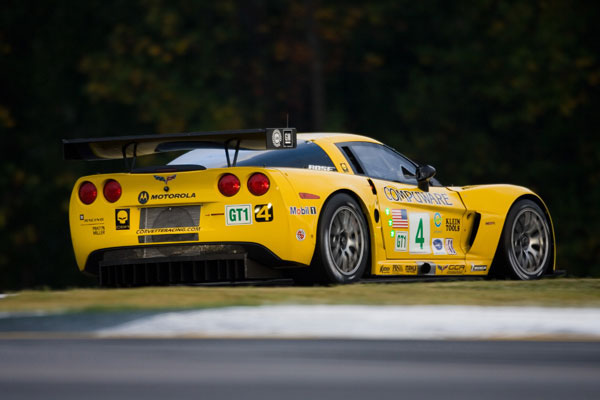 The "green" movement in motorsports gains significant momentum this weekend at Road Atlanta as one of endurance racing's crown jewels, Petit Le Mans kicks off for the 11th time. This race will be the first to use the Green Racing Protocols as developed by SAE International, the U.S. Department of Energy (DOE), the U.S. Environmental Protection Agency (EPA) and the American Le Mans Series (ALMS).
The "green" movement in motorsports gains significant momentum this weekend at Road Atlanta as one of endurance racing's crown jewels, Petit Le Mans kicks off for the 11th time. This race will be the first to use the Green Racing Protocols as developed by SAE International, the U.S. Department of Energy (DOE), the U.S. Environmental Protection Agency (EPA) and the American Le Mans Series (ALMS).This "race within a race" will be contested as part of the 10-hour, 1000 mile event on October 4th. A special trophy will be given to the manufacturer that, based on specified criteria, best represents sustainability. The factors that will be used to deterimine the winner of the Green Challenge include:
- Weight
- Vehicle speed
- Distance travelled
- Exhaust emissions
- Environmental footprint of fuel used
 One of the favorites in the Green Challenge is Corvette Racing (above). The team switched to e85 cellulosic ethanol at the beginning of this season. Cellulosic ethanol and grain-based ethanol produce the same end product from different feedstocks. Conventional ethanol is derived from grains such as corn, wheat or soybeans. There are many questions regarding the impact of conventional ethanol production on the food chain. By contrast, cellulosic ethanol is produced from a variety of biomass including agricultural plant wastes, sawdust and paper pulp.
One of the favorites in the Green Challenge is Corvette Racing (above). The team switched to e85 cellulosic ethanol at the beginning of this season. Cellulosic ethanol and grain-based ethanol produce the same end product from different feedstocks. Conventional ethanol is derived from grains such as corn, wheat or soybeans. There are many questions regarding the impact of conventional ethanol production on the food chain. By contrast, cellulosic ethanol is produced from a variety of biomass including agricultural plant wastes, sawdust and paper pulp.










